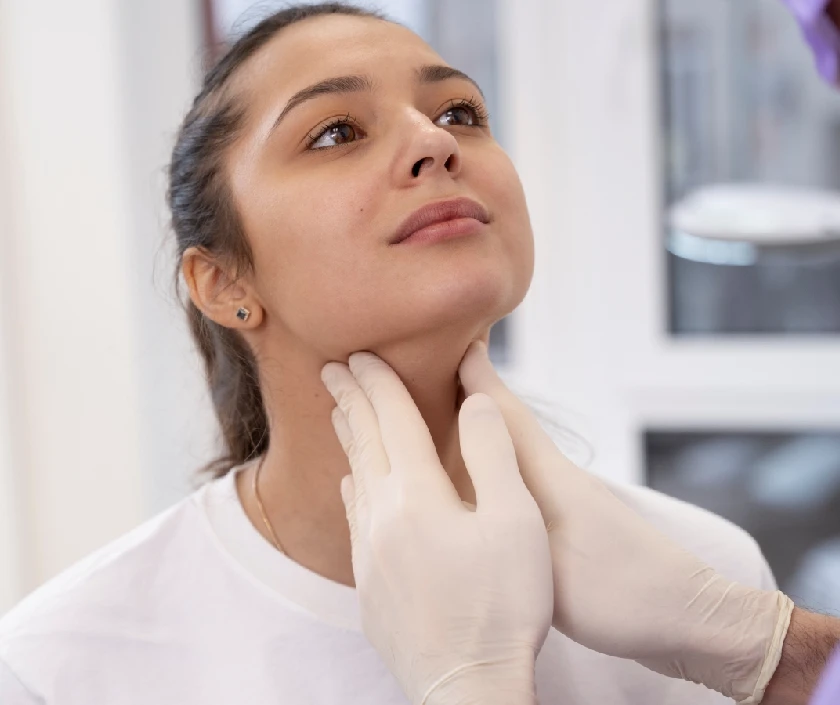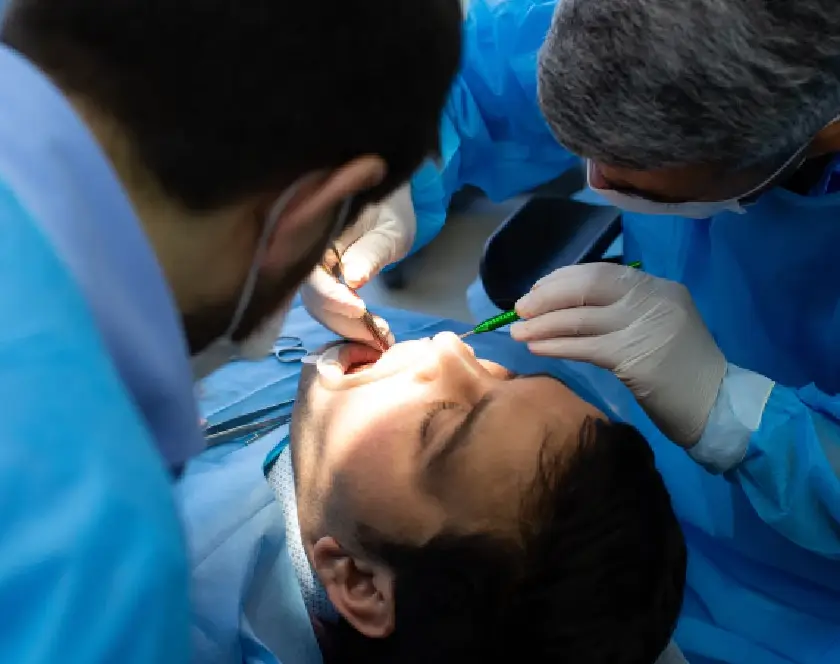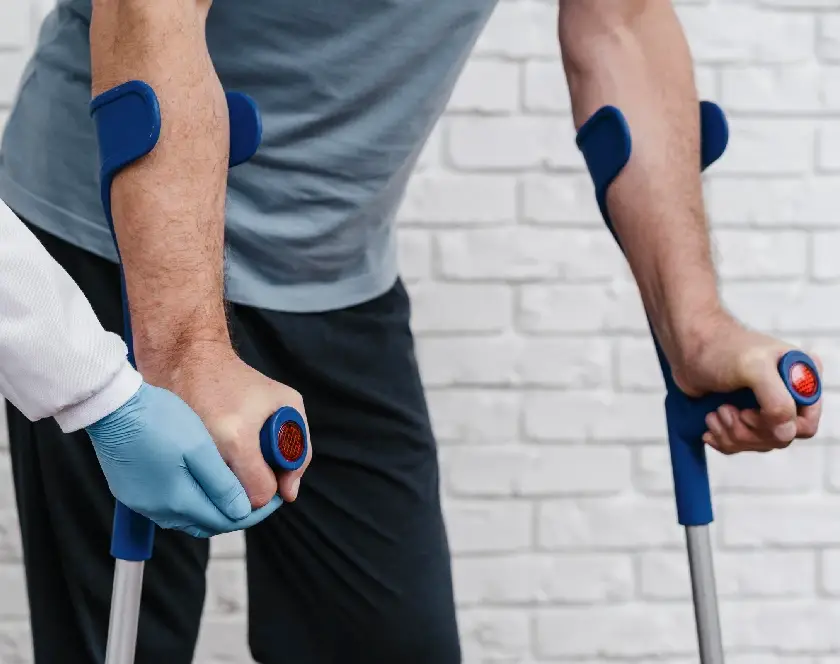What is Head and Neck Reconstruction?
Head and neck reconstruction is a specialised plastic surgery that restores form and function after cancer removal, trauma, or congenital defects affecting the face, mouth, and neck. These procedures help patients regain essential functions like speech, swallowing, and breathing while restoring their facial aesthetics and confidence.
At Elegance Clinic, we use advanced techniques like radial forearm free flap (RFFF) reconstruction, local tissue flaps, and microvascular free flaps to achieve excellent outcomes with minimal donor site complications.
Why is Reconstruction Needed in the Head and Neck?
Reconstruction is crucial to restore:
- Speech and swallowing: After tongue or oral cancer surgeries
- Facial aesthetics: For social confidence and psychological well-being
- Structural support: For jaw, cheek, or nose defects
- Breathing function: If airway structures are involved
Patients needing post-cancer reconstruction, traumatic injury repair, or congenital defect correction benefit immensely from early reconstructive surgery.
Types of Head and Neck Reconstruction
Local Tissue Flaps
Local tissue flaps play a vital role in head and neck reconstructive surgery, especially after cancer removal or traumatic injuries. These flaps involve mobilising tissue from areas adjacent to the defect while preserving their original blood supply, ensuring better survival rates and minimal complications. Local flaps are preferred for small to moderate defects because they provide a perfect colour, texture, and thickness match, leading to superior aesthetic outcomes.
Common local flap types used in head and neck reconstruction include nasolabial flaps, cheek flaps, temporalis muscle flaps, and forehead flaps. The nasolabial flap is ideal for reconstructing defects in the lips, cheek lining, and nasal floor. The cheek flap is used to repair buccal mucosa or external cheek defects, especially after oral cancer surgery. Temporalis muscle flaps are robust, vascularised flaps ideal for maxillary, orbital, and skull base reconstruction. The forehead flap remains the gold standard for nasal reconstruction due to its reliable blood supply and excellent tissue match.
At Elegance Clinic, our surgeons specialise in designing these local flaps for head and neck reconstruction with meticulous planning to achieve both functional restoration and aesthetic harmony, enhancing patient recovery and confidence after cancer or trauma surgeries.
Types of Local Flaps:
- Nasolabial Flap: Ideal for small intraoral defects such as lips, cheek lining, and nasal reconstruction.
- Cheek Flap: Useful for cheek or buccal mucosa reconstruction post cancer resection.
- Temporalis Muscle Flap: Provides robust vascularised muscle for maxillary, orbital, or skull base defects.
- Forehead Flap: Best suited for nasal reconstruction due to its reliable blood supply and tissue match.
At Elegance Clinic, our surgeons plan these local flap types meticulously to ensure minimal scarring and optimal aesthetic outcomes.
Free Microvascular Flaps
Free microvascular flaps have revolutionised head and neck reconstruction surgery by allowing transfer of tissue from distant sites with reconnection of blood vessels under a microscope (microvascular anastomosis).
Common Free Flaps Used:
- Radial Forearm Free Flap (RFFF): Thin, pliable tissue ideal for tongue, floor of mouth, and pharyngeal reconstruction with minimal donor site morbidity.
- Anterolateral Thigh (ALT) Flap: Provides large soft tissue volume for extensive cheek or oropharyngeal defects.
- Free Fibula Flap: Used for mandibular reconstruction, it restores jaw bone structure enabling dental rehabilitation.
- Free Jejunum Flap: Ideal for reconstructing the pharynx or esophagus to restore swallowing.
Our microvascular surgeons specialise in RFFF reconstruction and other complex free flaps to ensure functional restoration with high success rates.
Radial Forearm Free Flap (RFFF) Reconstruction
The radial forearm free flap is widely used in head and neck reconstruction in India due to its thin, pliable nature and reliable vascularity. It involves harvesting tissue from the forearm along with its artery and veins, reconnected to neck vessels to reconstruct oral cavity, tongue, and throat defects.
Benefits:
- Excellent tissue match for mouth and throat lining
- Allows early speech and swallowing rehabilitation
- Minimal donor site morbidity with proper closure techniques
At Elegance Clinic, our surgeons perform radial forearm flap surgeries with precision to restore vital functions and aesthetics effectively.
Other Head and Neck Reconstructive Procedures
Ear Reconstruction
Loss of full ear or its part due to trauma or cancer can be reconstructed using local flaps, cartilage grafts, or prosthetics to restore shape and symmetry.
Eye Reconstruction
- Socket Reconstruction: For lost eyes to support prosthesis.
- Eyelid Reconstruction: For defects post cancer or trauma.
- Ectropion/Entropion Correction: Corrects eyelid malposition to protect the eye.
Lip Reconstruction
- Performed after trauma, cancer excision, or for lip swellings to restore oral competence, aesthetics, and speech.
Nose Reconstruction
- Needed after trauma, cancer surgery, or burns using forehead or free flaps to rebuild nasal framework and skin covering.
Scalp Reconstruction
- For defects from trauma, cancer excision, or burns using local rotation flaps or skin grafts.
- Septoplasty can be performed for deviated nasal septum correction.
Soft Tissue Injury Reconstruction
- Facial tissue loss due to trauma is repaired using local flaps, free flaps, or skin grafts for optimal functional and cosmetic recovery.
Excision of Facial Swellings
- Removal of dermoid cysts, lipomas, sebaceous cysts, and vascular malformations with minimal scarring.
Facial Wound Suturing
- Plastic surgical repair for facial wounds, ensuring precise alignment and minimal scarring for best cosmetic results.
What to Expect Before and After Surgery
Before Surgery
- Detailed evaluation, imaging, and planning with your surgeon.
- Counselling about surgical steps, risks, and realistic expectations.
After Surgery
- Hospital stay for monitoring flap viability.
- Gradual rehabilitation with speech and swallowing therapy if needed.
- Regular follow-ups for recovery assessment.
Why Choose Elegance Clinic for Head and Neck Reconstruction?
- Expert Plastic Surgeons: Skilled in local flaps and microvascular free tissue transfers.
- Advanced Infrastructure: Equipped for complex microsurgeries.
- Multidisciplinary Care: Collaborative approach with oncologists, ENT surgeons, and rehabilitation experts.
- Personalised Patient Support: Compassionate care from consultation to recovery
Hear from our patients
EXCELLENTTrustindex verifies that the original source of the review is Google. Dr.shah is very kind and understanding... during my surgery of xentholesma..sir didn't late me feel nervous at all..he kept talking to me..he kept singing classic old hindi songs while performing surgery..I was like "ye to apne type ka banda hai"..I didn't even realise when my surgery got over. mr. Bhargav in staff and other team members were very kind an supportive.. I just have one minor complaint..simple panipuri wala or vegetable person in surat is always ready to receive online,UPI ,QR payment..but,pharmacist over their always be like "mera to cash payment hoga". Rest all is good.. people over there are very sincere at their work. I would definitely suggest to visit elegance clinic for getting your xentholesma cured.treatment charges are also affordable.Posted onTrustindex verifies that the original source of the review is Google. I am fully satisfied my hydrafacial treatmentPosted onTrustindex verifies that the original source of the review is Google. The experience was too good staff was really humble and the results were actually good!Posted onTrustindex verifies that the original source of the review is Google. I got hair transplant which is very painful but Got it done on ELEGANCE so it was very normal and which was bery helpful for me Special thanks to staff.Posted onTrustindex verifies that the original source of the review is Google. I had PRP and laser treatments at Elegance clinic for my skin and hair, and the experience has been truly excellent. Dr. Krina handled my skin treatment with great care and attention — I noticed a visible improvement in my skin texture and glow. For my hair, Dr. Bhargav and Dr. Ashutosh guided me through the PRP sessions with patience and professionalism, ensuring I was comfortable and well-informed throughout. The entire staff is polite, supportive, and the clinic maintains high standards of hygiene and advanced equipment. Overall, I’m very satisfied with the results and would highly recommend this hospital to anyone looking for genuine care and effective treatmPosted onTrustindex verifies that the original source of the review is Google. Dr Asutosh sir is very excellent Tammy tack sargary..Posted onTrustindex verifies that the original source of the review is Google. A good doctor clinic review often highlights a clinic's positive aspects, such as a doctor's expertise, a friendly and competent staff, convenient hours, and a clean, comfortable environment.Posted onTrustindex verifies that the original source of the review is Google. After suffering a serious burn injury due to a machine accident, I was fortunate to be treated by Dr. Ashutosh Shah at Elegance Clinic. His skill and calm approach gave me confidence from the first consultation. The surgery was done with great care, and the recovery support was outstanding. The clinic is clean and peaceful, and the staff treats you like family. Forever thankful for their help during a very tough timePosted onTrustindex verifies that the original source of the review is Google. One of the best doctors as well as staff in the town, just loved the process post surgery, follow up calls is non negotiable for them. Dr ashutosh shah and dr chetan were incredible. Best service provided by the elegance clinic!Posted onTrustindex verifies that the original source of the review is Google. "We had a wonderful experience at Elegance Clinic for my wife's HIFU treatment. The staff was friendly and supportive, and the clinic environment was very professional. Dr. Ashutosh Shah took the time to explain the procedure and what to expect. The final result is excellent—my wife's skin looks much firmer and rejuvenated. She is very happy, which makes me happy! A truly world-class clinic for aesthetic procedures
Contact Us
Ready to discuss? Fill out our contact form for a confidential consultation.
FAQ
What is the success rate of head and neck free flap reconstruction?
Success rates are above 95% in experienced microvascular centres like ours, with excellent functional and cosmetic outcomes.
Will I be able to speak and swallow normally after reconstruction?
Most patients regain near-normal speech and swallowing with proper surgical planning and post-operative rehabilitation.
Is radial forearm free flap safe?
Yes, it is considered one of the safest and most reliable flaps for oral cavity reconstruction, with minimal donor site problems when done meticulously.
How long is the hospital stay after microvascular flap surgery?
Usually 7–10 days for monitoring flap health and starting early rehabilitation.
Will there be scars at the donor site?
There will be scars, but our surgeons use precise closure and grafting techniques to minimise visible scarring and functional impact.









